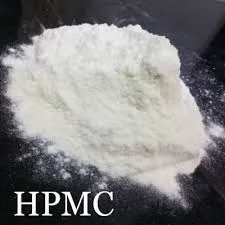
Dis . 06, 2024 09:20 Back to list
Exploring the Performance Characteristics of HPMC Grades in Various Applications
Understanding the Impact of Grades on HPMC in Various Applications
Hydroxypropyl methylcellulose (HPMC) is a versatile polymer widely used in various industries, including pharmaceuticals, food production, construction, and personal care. One crucial aspect that impacts its performance in these applications is the grading of HPMC. This article delves into the different grades of HPMC, their properties, and how they influence their applications.
HPMC is synthesized through the etherification of cellulose, a natural polymer derived from plant materials. This modification enhances its solubility and functional characteristics, making it suitable for a range of uses. The grading of HPMC generally depends on its viscosity and the degree of substitution of hydroxypropyl and methyl groups on the cellulose backbone. Common grades include low, medium, and high viscosity, each catering to specific application needs.
Understanding the Impact of Grades on HPMC in Various Applications
In the pharmaceutical industry, HPMC grades play an essential role in drug formulation. Low and medium viscosity HPMC can serve as binders in tablet formulations, contributing to the uniform distribution of active pharmaceutical ingredients (APIs). High viscosity grades are particularly beneficial in controlled-release dosage forms. For instance, HPMC can gel in the presence of water, creating a matrix that allows for the gradual release of drugs, improving therapeutic efficacy and patient compliance.
grades of hpmc

In the food industry, the choice of HPMC grade directly affects food structure and texture. Various grades are utilized as thickening agents, stabilizers, and emulsifiers. Low-viscosity grades might be employed in beverages for clarity and smoothness, while medium-viscosity grades are often used in sauces and dressings to enhance consistency without altering flavor. High-viscosity HPMC is used in gluten-free baking, providing the necessary structure and moisture retention that would otherwise be lacking.
In construction, HPMC finds its application as a key ingredient in cement and plaster formulations. Here, medium to high viscosity grades are essential as they contribute to water retention and workability. The presence of HPMC in these applications leads to improved adhesion and reduced cracking, thereby extending the lifespan of construction materials.
In personal care products such as shampoos and creams, the grade of HPMC can influence the feel and application of the product. High viscosity grades provide a luxurious, creamy texture, while lower viscosity options maintain a lighter feel. Manufacturers often select specific grades based on consumer preferences for sensory attributes, functionality, and performance.
In conclusion, the grading of hydroxypropyl methylcellulose is fundamental to its diverse applications across various industries. Understanding the differences in viscosity and the degree of substitution helps manufacturers tailor HPMC to meet the specific needs of their products, whether it be enhancing drug delivery, improving food textures, or ensuring optimal performance in construction materials. As industries continue to evolve, ongoing research into HPMC grades will likely lead to new applications and improvements, further solidifying its role as a critical ingredient in modern formulations.
-
Unlocking the Benefits of HPMC Products: A Gateway to Versatile Applications
NewsAug.07,2025
-
Unleashing the Potential of HPMC Ashland: A Comprehensive Look
NewsAug.07,2025
-
Tile Bonding Cellulose: The Key to Superior Adhesion and Durability
NewsAug.07,2025
-
Hydroxypropyl Methylcellulose Powder: The Versatile Component in Modern Pharmaceuticals
NewsAug.07,2025
-
Hydroxyethyl Cellulose: The Versatile Solution for Various Industries
NewsAug.07,2025
-
Hydroxyethyl Cellulose (HEC): The Versatile Polymer for Various Applications
NewsAug.07,2025







